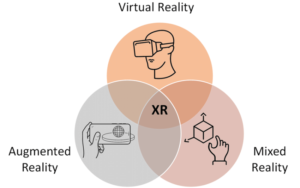As technology relentlessly marches forward, weaving itself deeper into the fabric of our lives, the need for robust cybersecurity becomes ever more critical. Traditional approaches focused on building impenetrable walls around our systems, but in today’s interconnected world, such defenses are no longer enough. Enter extended cybersecurity, a holistic approach that transcends firewalls and antivirus software, recognizing that security is not a destination, but a continuous journey of adaptation and vigilance.
Introduction to Cybersecurity
Cybersecurity refers to the practice of protecting systems, networks, and programs from digital attacks. These attacks often aim to access, change, or destroy sensitive information, interrupt normal business processes, or extort money from users. As our reliance on technology grows, so does the importance of cybersecurity. In this digital age, where data is often referred to as the new oil, the need for robust cybersecurity measures cannot be overstated.
The Evolution of Cybersecurity
Over the years, cybersecurity has evolved from a niche technical issue to a critical strategic concern for organizations of all sizes and across all industries. This evolution has been driven by the increasing complexity and sophistication of cyber threats, as well as the growing digitization of business operations. Today, cybersecurity is not just about protecting information; it’s about safeguarding the very infrastructure that enables modern societies to function.
The Importance of Cybersecurity
In today’s interconnected world, cybersecurity is more important than ever. A successful cyber attack can cause significant damage to an organization, including financial losses, theft of intellectual property, and damage to the organization’s reputation. Moreover, with the increasing prevalence of remote work and the Internet of Things (IoT), the attack surface for cybercriminals is expanding, making effective cybersecurity even more crucial. Cybersecurity is no longer a concern only for IT departments; it’s a business-wide issue that requires attention at all levels of an organization.
The Challenges of Cybersecurity
Despite the growing awareness of the importance of cybersecurity, many organizations still struggle to implement effective cybersecurity measures. Some of the key challenges include the rapid pace of technological change, the increasing sophistication of cyber threats, and the shortage of skilled cybersecurity professionals. Additionally, the rise of cloud computing and mobile devices has introduced new vulnerabilities that need to be addressed.
The Future of Cybersecurity
Looking ahead, cybersecurity will continue to be a top priority for organizations. Key trends shaping the future of cybersecurity include the convergence of Generative AI (GenAI) and cybersecurity, the rise of unsecure employee behavior, third-party risks, continuous threat exposure, boardroom communication gaps, and identity-first approaches to security. These trends will require organizations to adopt a range of practices, technical capabilities, and structural reforms within their security programs, with a view to improving organizational resilience and the cybersecurity function’s performance.
From Static Defenses to Dynamic Resilience:
Imagine a fortress built to withstand medieval siege weapons, only to crumble under the onslaught of modern missiles. Traditional cybersecurity often resembles that fortress, relying on static measures like firewalls and intrusion detection systems. Extended cybersecurity, on the other hand, adopts a dynamic and adaptable approach, recognizing that threats evolve at breakneck speed. It prioritizes continuous monitoring, threat intelligence, and real-time response, ensuring systems can adapt and counter emerging threats before they inflict damage.
Beyond the Perimeter: Securing the Ecosystem:
Picture a castle with a strong gate, but forgetting to secure the back door. Traditional cybersecurity often focuses on protecting the core network, neglecting the interconnected devices and software that make up the broader ecosystem. Extended security acknowledges this interconnectedness, extending its reach to secure cloud environments, mobile devices, and the Internet of Things (IoT). This holistic approach ensures seamless protection across all touchpoints, eliminating vulnerabilities that attackers can exploit.
From Reactive to Proactive: Embracing Threat Intelligence:
Imagine a city preparing for a siege based on rumors, not actual intelligence. Traditional cybersecurity often reacts to threats after they materialize. Extended security prioritizes proactive measures fueled by threat intelligence. By gathering and analyzing data on emerging threats, vulnerabilities, and attacker tactics, organizations can anticipate and mitigate attacks before they occur. This proactive approach minimizes damage and reduces the time it takes to recover from incidents.
From Individual Responsibility to Collective Defense:
Imagine fighting a war alone, without allies. Traditional cybersecurity often views security as an individual responsibility for each organization. Extended security recognizes that collaboration is key in the fight against cybercrime. By sharing threat intelligence, best practices, and incident response strategies, organizations can create a collective defense, making it harder for attackers to target individual entities.
The Human Factor: Addressing the Weakest Link:
Imagine a fortified castle with well-trained guards, but neglecting to educate the citizens within. Traditional cybersecurity often overlooks the human element, leaving users vulnerable to social engineering attacks and phishing scams. Extended security prioritizes security awareness training for employees, equipping them with the knowledge and skills to identify and avoid cyber threats. This empowers them to become active participants in their organization’s security posture.
Building a Culture of Security:
Imagine a society where security is an afterthought, not a core value. Traditional cybersecurity often views security as a technical issue, implemented by IT teams. Extended security recognizes that security is a cultural imperative, requiring buy-in and active participation from all levels of the organization. This cultural shift fosters a shared responsibility for security, leading to a more resilient and proactive stance against cyber threats.
The Future is Extended:
The threat landscape is constantly evolving, demanding a new approach to cybersecurity. Extended security, with its focus on dynamic resilience, holistic protection, proactive measures, collaboration, and cultural change, offers a roadmap for navigating this ever-changing terrain. By embracing its principles, organizations can build robust defenses, adapt to emerging threats, and ensure a more secure future in the digital age.
Conclusion
Cybersecurity is a critical concern in the digital age. As technology continues to advance, the need for secure systems becomes increasingly important. Organizations must stay ahead of the curve by continuously updating their cybersecurity measures and strategies to protect against evolving threats. The journey towards effective cybersecurity is a challenging one, but with each step, we move closer to a safer and more secure digital world.





